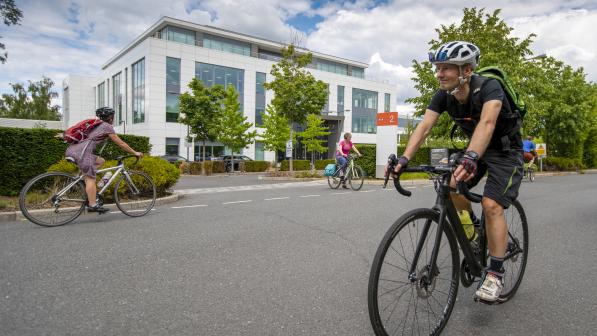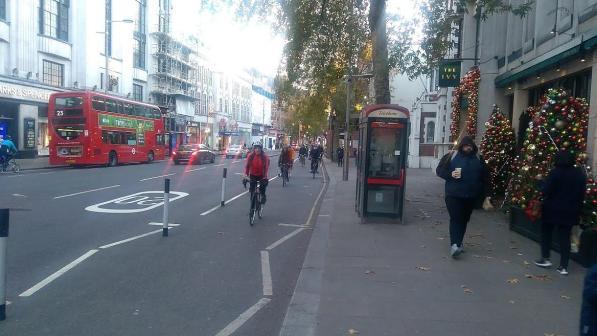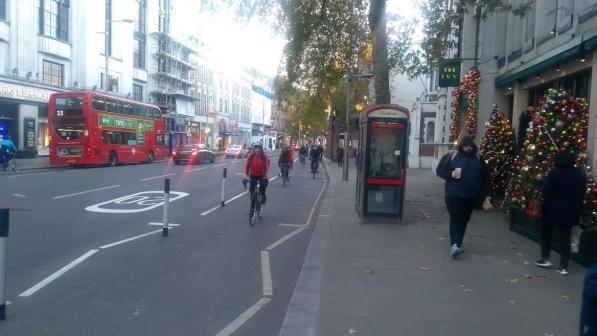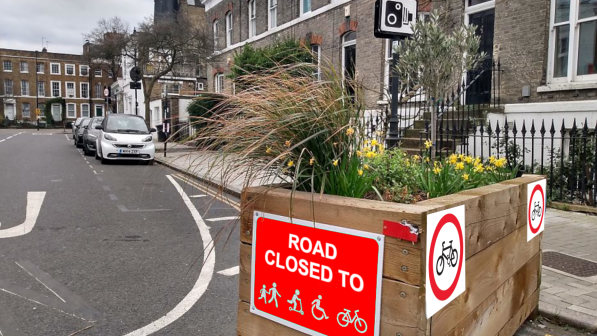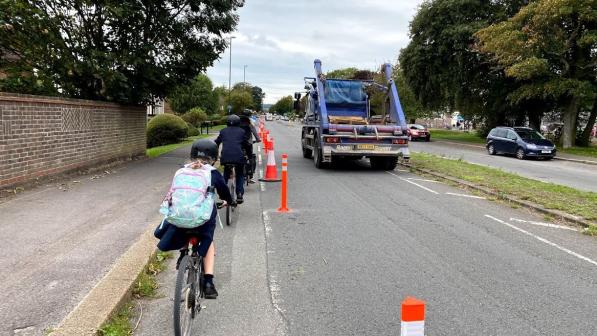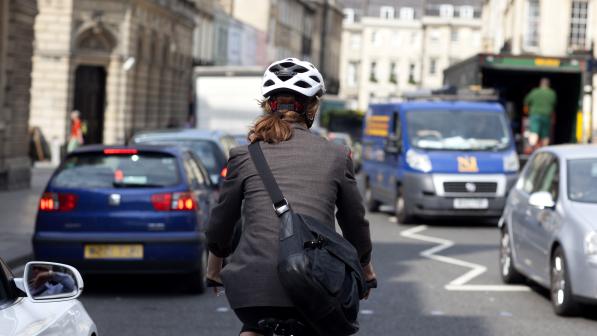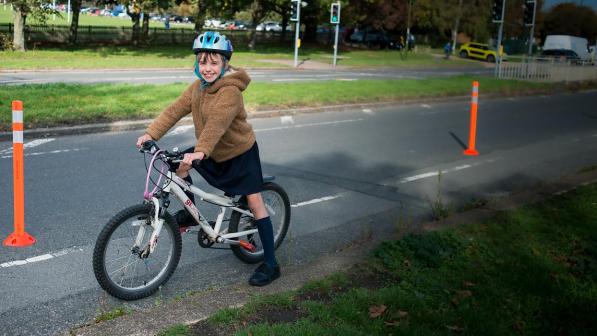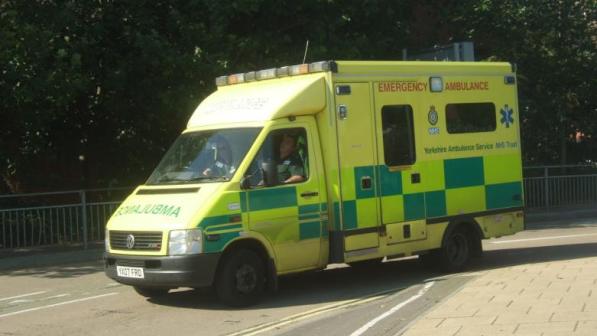Kensington Council kills hopes for cycle lane

Sometimes a story starts as a local issue but just organically grows, until one day people realise that what’s happened or happening has far wider implications.
That’s the situation we have in Kensington, where on Wednesday night the council’s leadership team unanimously agreed not to reinstall the government-funded cycle lane along Kensington High Street.
A national story – it’s not just about Kensington
I always think twice about writing articles about things happening in London, partly because there’s already a natural tendency for some media outlets to focus more on London, and partly because it’s highly likely that our friends at the London Cycling Campaign (LCC) will be flagging up concern in any event, as they repeatedly have about Kensington, condemning Wednesday night’s decision.
So don’t stop reading if you live outside London and decisions taken there by borough councils aren’t usually of huge interest, because this isn’t a London story: it’s about the decisions highway authorities make everywhere about road networks, including cycle lanes and liveable neighbourhoods, and how they make those decisions.
It’s about challenging flawed and irrational decisions that jeopardise the safety of vulnerable road users and discourage active travel, and it’s hugely significant time-wise, because it overlaps with Cycling UK’s own legal challenge against the decision taken by West Sussex County Council (WSCC) to remove a cycle lane in Shoreham.
Donate to the Cyclists' Defence Fund
Removing a well used cycle lane - again
The chronology of what happened with the cycle lane in Kensington and the campaign to prevent its removal, and then get it re-instated, is fully set out on Better Streets for Kensington and Chelsea’s website.
Essentially, the Royal Borough of Kensington and Chelsea (RBKC) removed the protected cycle lane from the High Street in December 2020, before it was fully installed and after just seven weeks.
As was the case with the temporary cycle lane installed in Shoreham, the lane was hugely successful, with cycling numbers more than doubling to between 3,000 to 4,000 journeys a day, allowing children and key workers to ride safely to school and work on what was the only protected cycle lane in the whole borough.
Must make space for parking
To justify the removal of the lane, RBKC cited complaints from 322 people, about 0.2% of the borough’s population, claiming that removing the lane would add extra space for motor traffic, easing congestion and quickening journey times, ignoring all of the evidence that cycle lanes move more people in less space.
Predictably, the opposite happened, with an analysis undertaken by Bike Is Best following analysis of Transport for London’s (TfL) traffic cameras and Google artificial intelligence tools, showing that after the lane was removed the space was largely taken up by parked cars, with the eastbound cycle route blocked by parked cars 63.6% of the time. So, the lane was removed to make space for parking, on a crucial east-west corridor in London.
East-west corridor
The east-west corridor point is really important because, as pointed out in LCC’s reaction to Wednesday’s decision, RBKC’s decision has an impact far beyond its own boundaries.
The absence of a safe east-west route through the borough leaves a dangerous gap in London’s strategic cycling network, with the removal of the lane risking the lives of people who don’t live within RBKC but who supported the lane and were using it, as well as borough residents.
RBKC has, however, seemed primarily concerned about residents' objections, though bizarrely paying less heed to the concerns of Better Streets.
I’m not suggesting that RBKC shouldn’t listen to residents, but their decisions on transport issues can’t be dictated by them. That’s not my opinion, it’s a fact, because RBKC’s network management duty under section 16 of the Traffic Management Act (TMA) isn’t a duty to its residents, it’s a duty to manage its road network having regard to various objectives including securing the expeditious movement of traffic (which includes cyclists) on its roads and on those managed by other authorities.
Listening to Wednesday night’s meeting, it rather sounded as though the leaders hadn’t quite grasped that point!
Judicial review
If you’re wondering why a decision was being taken in March about whether to re-instate a lane removed in December, the answer is that faced with the threat of legal action through judicial review, RBKC agreed in January to review its decision to remove the lane, which effectively prevented any legal action being taken by Better Streets, until now.
The pre-action protocol letter sent by the Environmental Law Foundation on behalf of Better Streets to RBKC on 21 December sets out in detail the basis of their proposed legal challenge, including reference to RBKC’s failure to consult, the legitimate expectation that the trial scheme would operate for a much longer period than seven weeks, their failure to take into account relevant information and considerations, and that the decision was irrational.
Clearly Better Streets will have to consult further with their lawyers, however it appears likely that a legal challenge may well follow in Kensington, unless of course matters end up being taken out of RBKC’s hands.
What will Grant Shapps do?
The Secretary of State for Transport (SoS) Grant Shapps does have powers under the TMA to intervene if he believes that RBKC are failing to perform their duties under the TMA; and in complying with their duties under the TMA, RBKC has to have regard to statutory guidance issued by the SoS, who issued guidance last year telling all highways authorities that they were legally required to consider cycle lanes, school streets, closing off rat-runs, 20 mph schemes and similar measures as part of their Network Management Duty.
The failure to have regard to that statutory guidance forms part of Cycling UK’s legal action against WSCC, because they too disregarded or didn’t understand the guidance, so Cycling UK now intend to write to the SoS, urging him to uphold that statutory guidance, by making it clear to councils like RBKC that he is prepared to intervene using his powers under the TMA if they ignore it.
The Government has rightly required councils in England to consider installing protected cycle lanes, 20 mph schemes and similar measures, as part of their Network Management Duty. These measures are vital to create better cycling and walking conditions, both as a short-term way to keep the country moving while people are limiting their use of public transport, and as a longer-term way of avoiding a car-led recovery from the Covid crisis, which also tackles the crises of congestion, pollution, ill health due to physical inactivity, and the climate.
Cycling UK policy director, Roger Geffen
Cycling UK policy director, Roger Geffen explains "The Government has rightly required councils in England to consider installing protected cycle lanes, 20 mph schemes and similar measures, as part of their Network Management Duty. These measures are vital to create better cycling and walking conditions, both as a short-term way to keep the country moving while people are limiting their use of public transport, and as a longer-term way of avoiding a car-led recovery from the Covid crisis, which also tackles the crises of congestion, pollution, ill health due to physical inactivity, and the climate.
"With some councils clearly determined to disregard their Network Management Duty, we will be urging Transport Secretary Grant Shapps to make it clear to councils like Kensington & Chelsea that he is prepared to intervene, using his powers under the Traffic Management Act, if they do not fall into line."
As I said at the start of this article, this is not simply a Kensington story, because there’s a test here for the Government.
They’ve said that they expect councils to re-allocate road space for people cycling and walking, and issued excellent statutory guidance to push councils to do this, but how far are they prepared to go when councils like RBKC and WSCC pay lip service to it, and will the SoS seriously consider his intervention powers?
Help us keep fighting
That’s what we’ll be pressing for, but in the meantime it’s vital that councils realise that irrational decisions can and will be challenged.
Better Streets are looking to do this in Kensington and Cycling UK have already done this in West Sussex, funding the legal action through our Cyclists’ Defence Fund (CDF).
But judicial review is costly, and we can only pursue cases like this with your support for CDF, so please contribute if you want us to keep fighting not just for people who already cycle, but those who can’t or won’t - but might, if councils like West Sussex and Kensington didn’t make irrational decisions.
